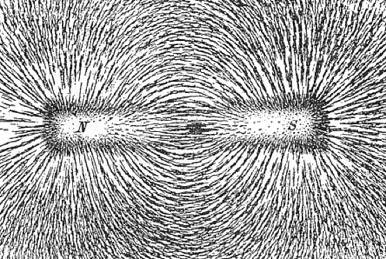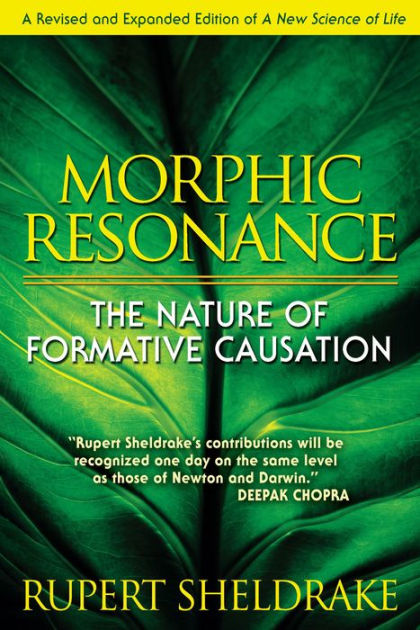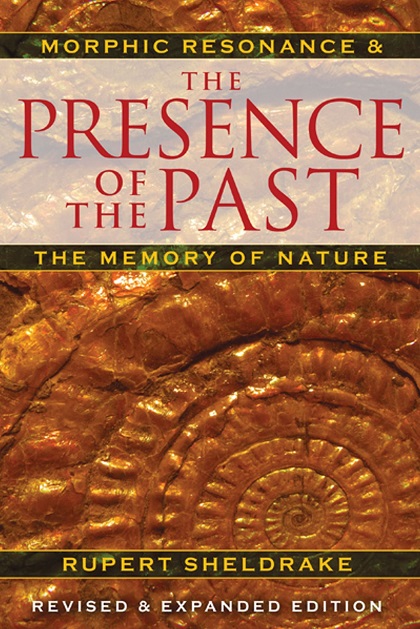|
home | what's new | other sites | contact | about |
|||
|
Word Gems exploring self-realization, sacred personhood, and full humanity
Dr. Rupert Sheldrake's A Brief History
return to "Evolution Controversy" contents page
Editor's note: The following is a transcription of Dr. Sheldrake's lecture, "The Biology Of Transformation: The Field," which might be viewed on Youtube.
I’m going to speak today about morphic fields. [These] are the self-organizing fields at all levels of complexity. They underlie the organization of minds, of bodies, of crystals, of plants, of molecules, of stars, and of galaxies. They’re the fields that give things their shape, their form, their organization. So, I’ll be talking about the nature of morphic fields, how they have a kind of memory within them by morphic resonance, and I’ll be talking about various methods of testing for their existence. But first I’m going to start with a brief history of fields… the field concept is really transforming the whole of science. It wasn’t there in the seventeenth century when mechanistic science got going. The ‘machine metaphor’ that science was based on from the seventeenth century onwards was mainly clockwork, and that was the metaphor used to understand the cosmos. But things changed a lot in the 1840s, right here in London. Throughout the eighteenth century people had been trying to understand electricity and magnetism, to no avail. It was a kind of amateur hobby. Rich gentlemen had electrical and magnetic machines in their houses, and gave sort of demonstrations of sparks and electrical-magnetic attraction and repulsion. But no one understood it. In the 1840s Michael Faraday, working right here in London, invented the ‘field’ concept. And he used the English word ‘field,’ which really means ‘a piece of tilled land,’ an area with a boundary, already used in English with many different uses – football field, field of view, field of interest, etc. – many normal English uses, all of them meaning, ‘a region of activity.’ An agricultural field, the source of the metaphor, is a region of activity. If you stop cultivating the field, it reverts to scrub and finally woodland. It’s a region of activity. And [Faraday] thought that magnets had regions of activity, so did electrically charged bodies, and he showed that the electrical and magnetic fields interacted. It wasn’t until the 1860s when James Clark Maxwell gave us the equations for electro-magnetic field theory and showed that light was an electro-magnetic vibration in the electro-magnetic field. This then became the basis of electrical technologies and other forms of electro-magnetic radiation, like x-rays, ultraviolet, infrared radio waves, none of which were known about before this revolution. It was a completely revolutionary insight into the nature of Nature. But, what were these fields? Everyone asked Faraday this question, but he didn’t know. He had two theories about the fields, one was that he thought the fields might be fundamental to all nature. Fields are invisible structures in space. In fact, they may be, as he put it, “modifications of mere space.” His alternative theory, his less-favored theory, was the fields are made of subtle matter – the “ether.” Well, the nineteenth century was rather materialistic, Maxwell took up the “ether” version of Faraday’s theory, and all nineteenth century electro-magnetic theory from then on was based on “the ether,” and invisible form of subtle matter pervading all space. In 1905, Einstein and his split-theory of Relativity, in a way, went back to Faraday’s idea of fields as a modification of space. In Einstein’s Special Theory of Relativity he showed that the ether doesn’t exist, we don’t need it, he just got rid of it – the fields are fields. And so, people said, what are they made of? He said, they’re not made of anything. Fields are fundamental in nature. Matter arises from fields, not fields from matter. Fields are not made of matter, rather, matter is made of fields – of energy, bound within fields. In his General Theory of Relativity in 1927, Einstein showed that the universal gravitational field is a “field” – which is what holds the entire universe together, links everything in the universe together. And so that was another kind of field, different from electro-magnetic fields. In quantum theory, they came up with quantum fields: electrons and protons and all other particles are vibrations in quantum fields. So, what’s going on -- what is the nature of these fields? Super-String Theory is an attempt to tie them all together in terms of a grand unified field. But there’s another field which physics, so far, has not recognized, and that’s what I call the “Morphic Field,” the fields that organize the forms and shapes of self-organizing systems. And those are the fields I’m going to talk about now. Well, here’s a magnetic field, and the point to realize here is that the field is not just within the magnet but is all around it. It’s outside the boundaries of the material object. Fields are more extensive than material objects. And this is why the philosopher of science, Sir Karl Popper, said that, “Through modern physics, materialism has transcended itself, because matter is no longer the fundamental explanatory principle. Fields and energy are.” Matter is less fundamental than fields and energy… materialism is based on the [principle,] “the most fundamental thing is matter” – [but] this is no longer [deemed to be] true.
Here you see the “pattern in space” around the magnet revealed by iron filings. If you took away the iron filings, the field… the invisible structure, would still be there. In the 1920s, biologists working on the development of fungi, plants, and animals, came up with a biological field concept. Nobody understood then, and they still don’t understand today, how embryos develop, how a complex organism like ourselves arises from a [single] fertilized egg, with very little structure. And the idea was that developing organisms are shaped by form-shaping fields – “morphogenetic fields.” “Morphogenesis” means “the coming into being of form.” “Morphe” means “form,” “genesis” means “coming into being.” Morphogenesis is the way animals and plants, all living organisms, or even crystals, have forms that come into being – they weren’t there before, [but] after a formative process, they are there now: more structure comes from less. The idea was that this process was guided by morphogenetic fields that shape the forms of living organisms. They’re like invisible plans or blueprints. The reason we need this is that DNA and chemicals alone cannot explain morphogenesis. All biologists agree on this. Molecular biologists made it even clearer that this is the case. Think of your arms and legs, they have different shapes, and yet they have exactly the same genes. In fact, all the cells of your body have the same genes, the same so-called “genetic program.” Yet, [the developmental end-result] is all different – the eyes, the spleen, the liver, they’re all different; your arms and legs have the same chemicals – chemically, they’re identical, yet they have different shapes. Why? Well, you can’t explain it in terms of chemistry or DNA, you need a “plan,” an “architectural plan,” and that’s what the morphogenetic field provides. It’s a bit like an architectural plan of a building. You could build two houses completely different in shape out of the same building materials – bricks, cement, timber, etc. The difference between the two houses is not in the matter they’re made of, nor in the energy involved in building them – it could be the same for both houses – it’s the plan that underlies them, and that’s what these fields do, they provide the order, the structure, the plan; or, if you like, the “in-form-ation” – “information” means “that which puts form into something.” That’s what the fields are doing.
Here’s another example of the electro-magnetic field, revealing that the Sun has an electro-magnetic field that stretches throughout the entire solar system. The Earth has a magnetic field [too] … the tail [of the magnetic field] stretches out for millions of miles into space and is constantly vibrating and oscillating. This “field nature” of the universe is what we’re, in the twentieth century and twenty-first century, just coming to realize. In the nineteenth century, and certainly at the time of Newton, the universe was seen just the bare-bones of matter. Gravitation was the obsession of all astronomers. But this is what put the flesh, as it were, on the gravitational view of the universe, showing the “field nature” of everything, and of the Earth itself.
|
|||
|
|


